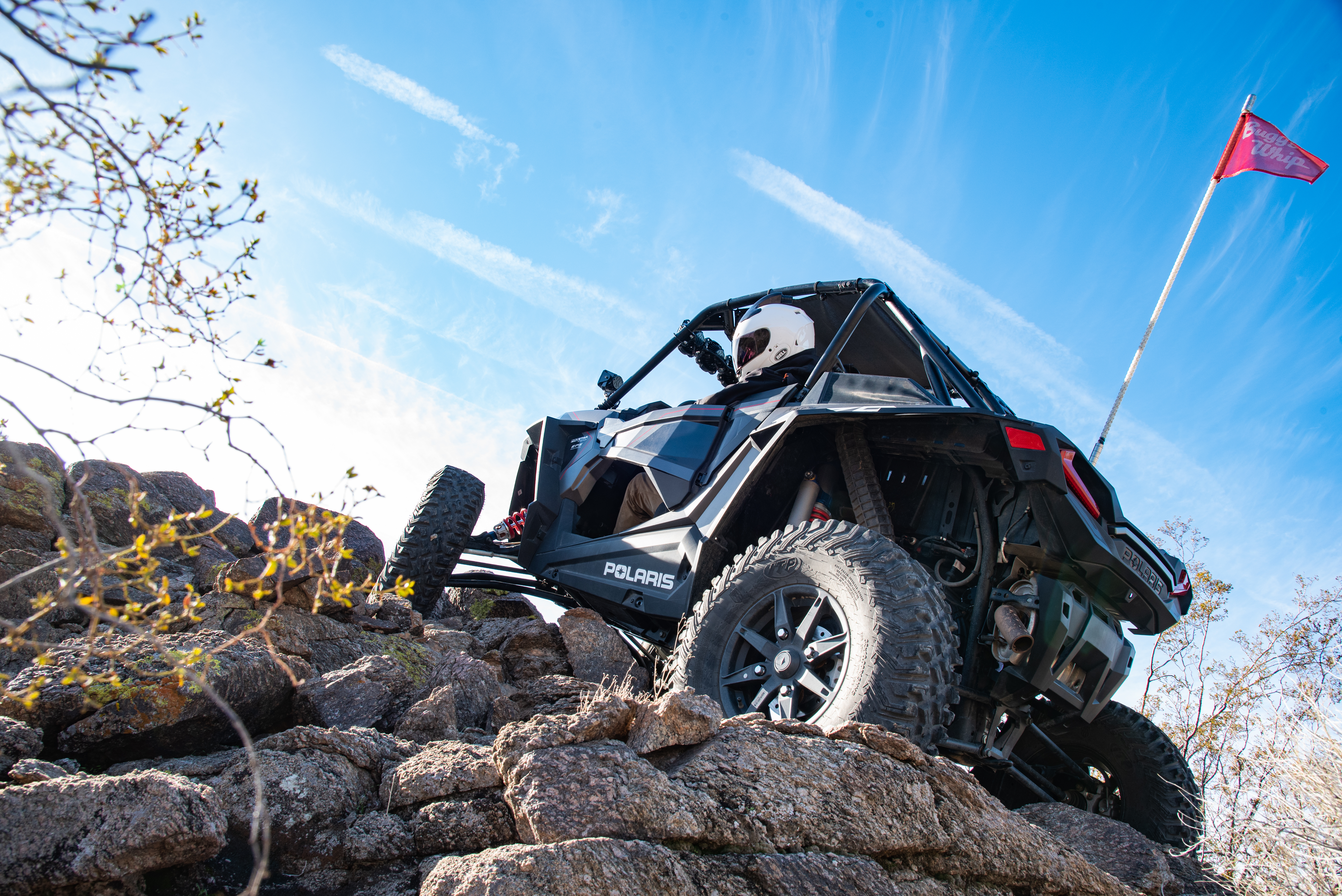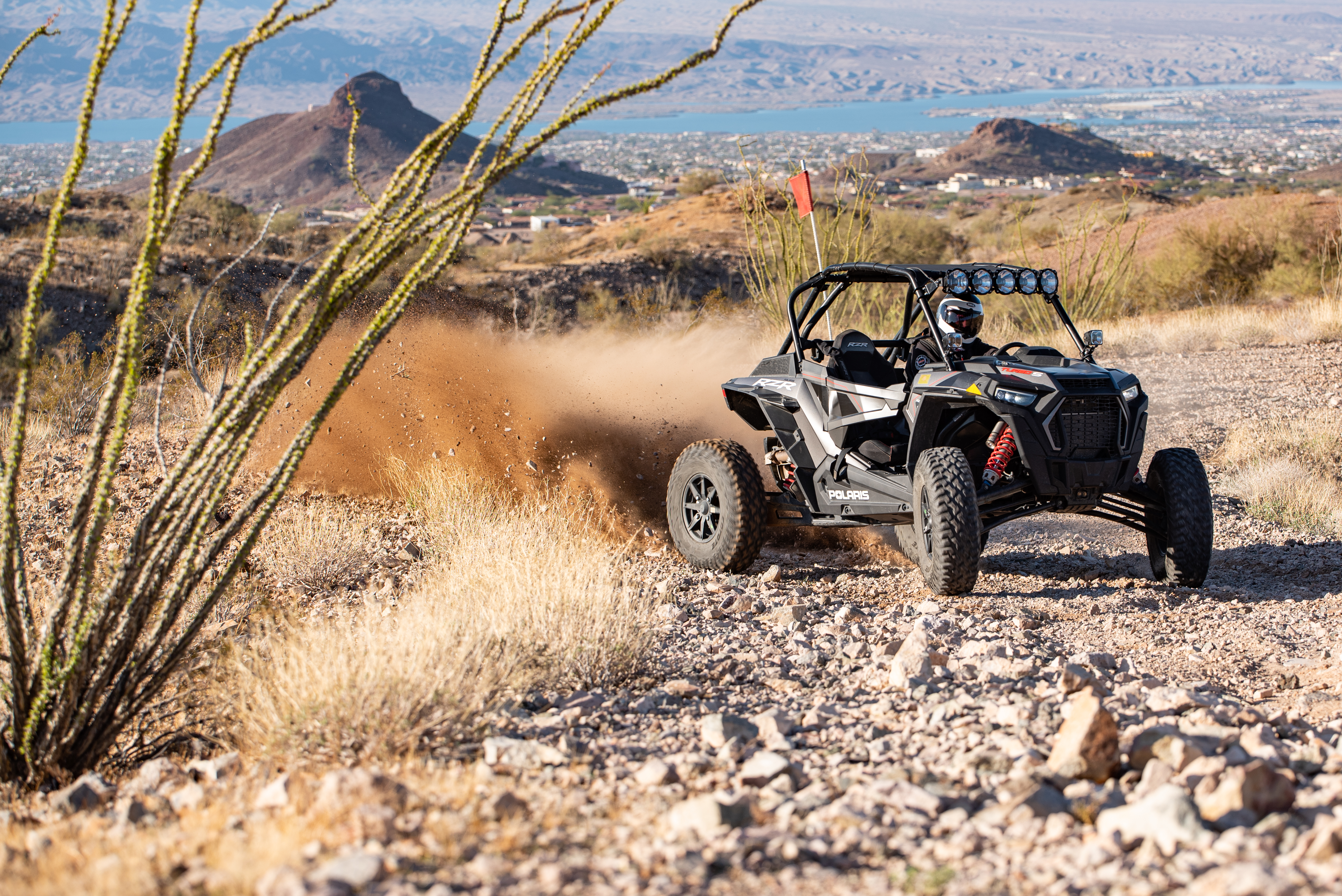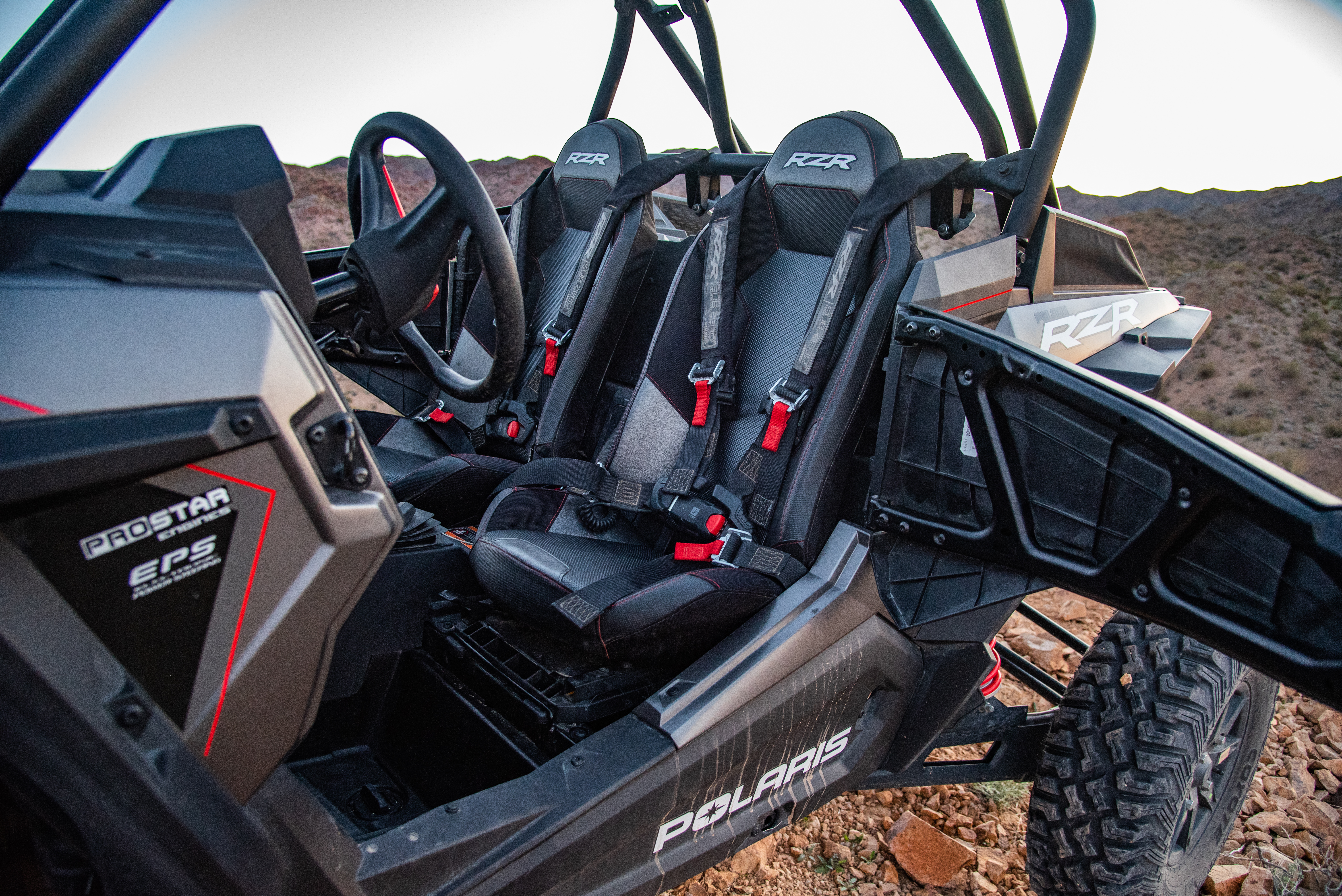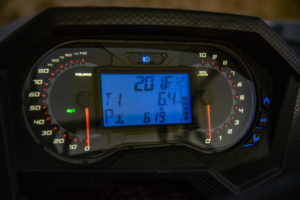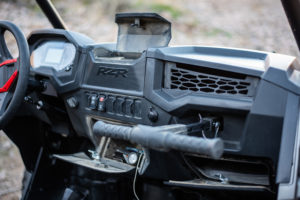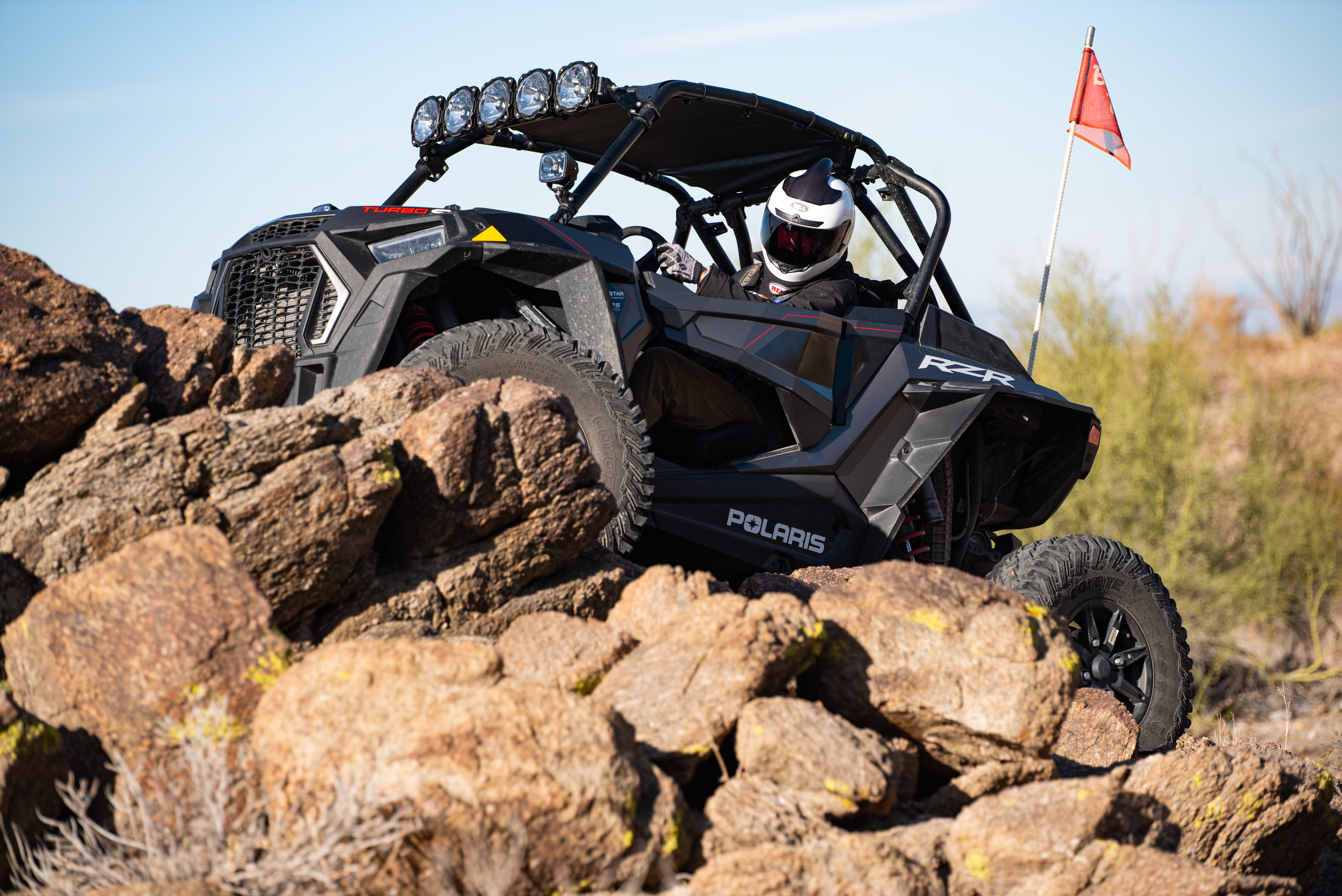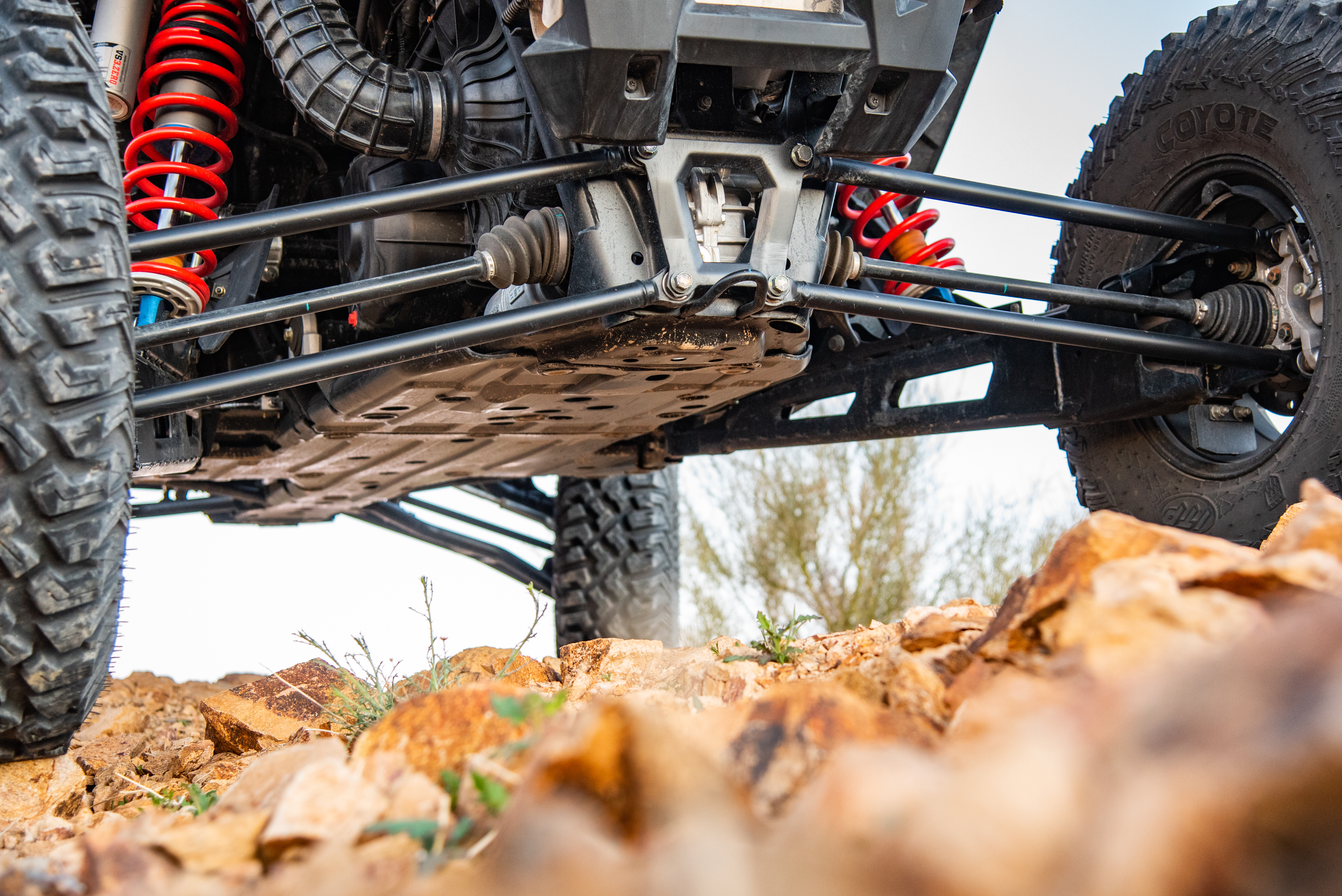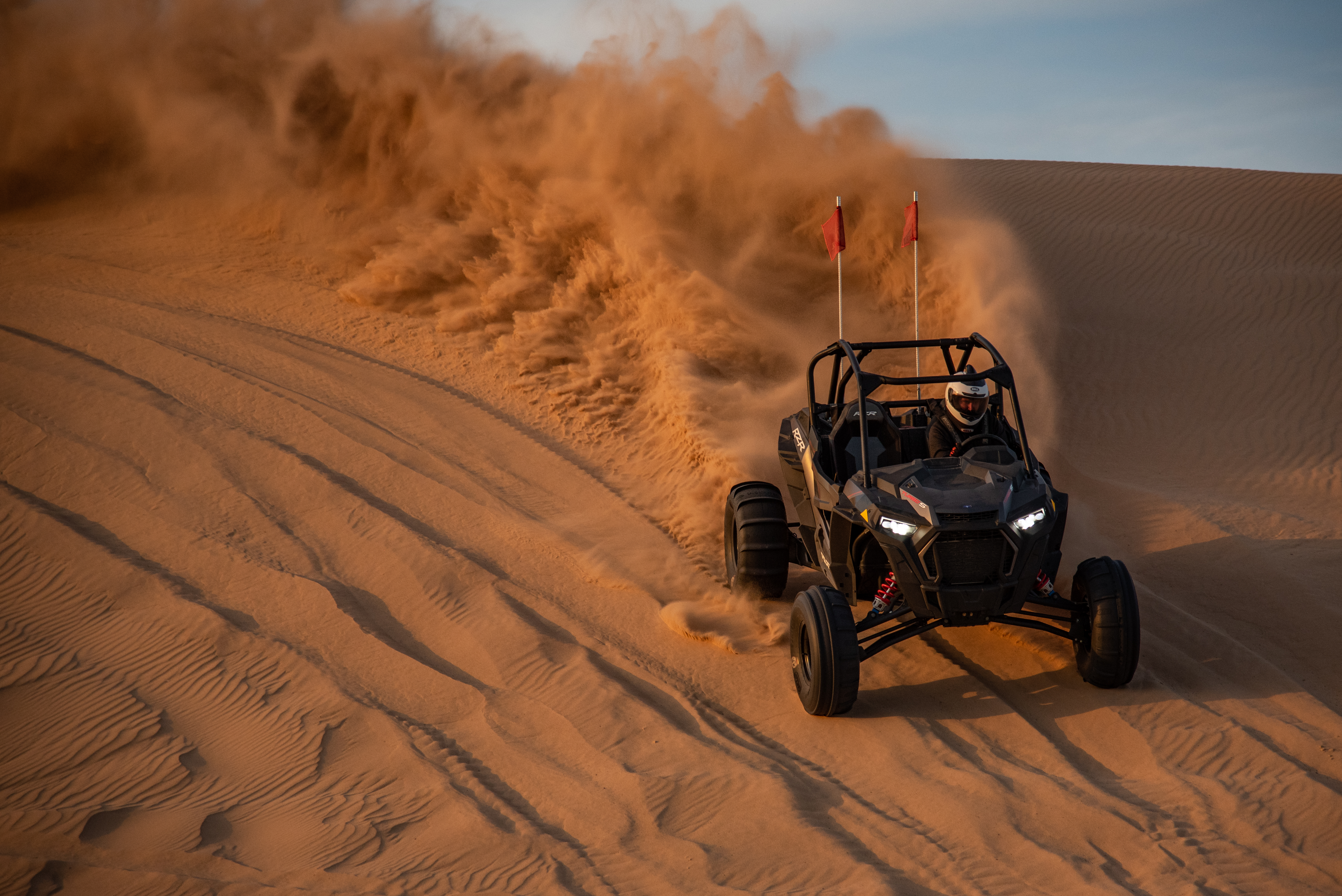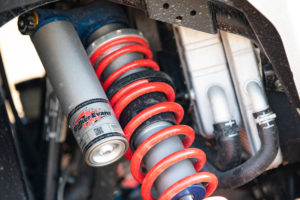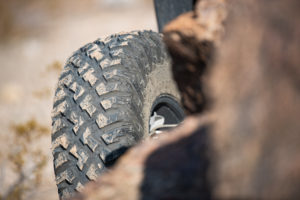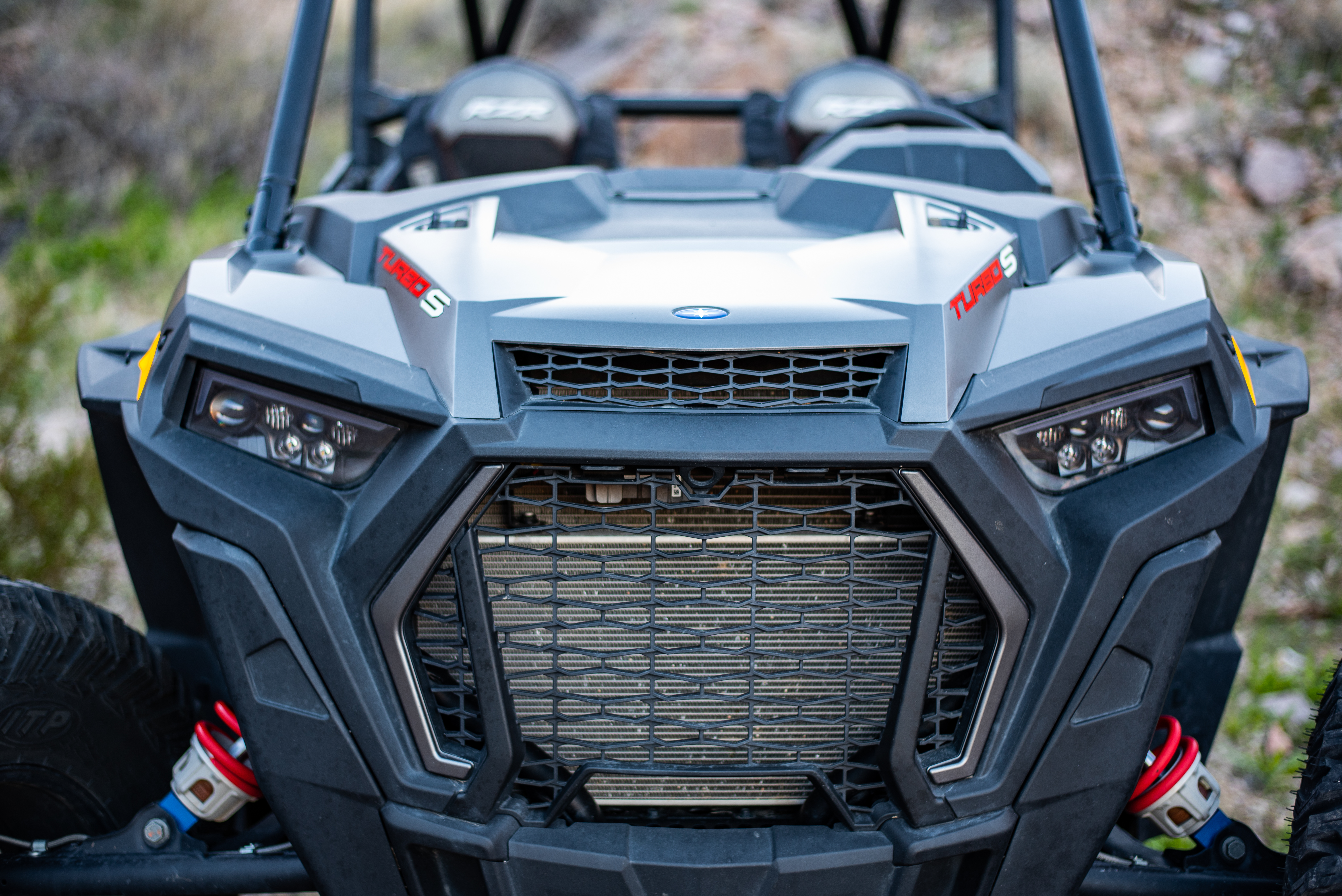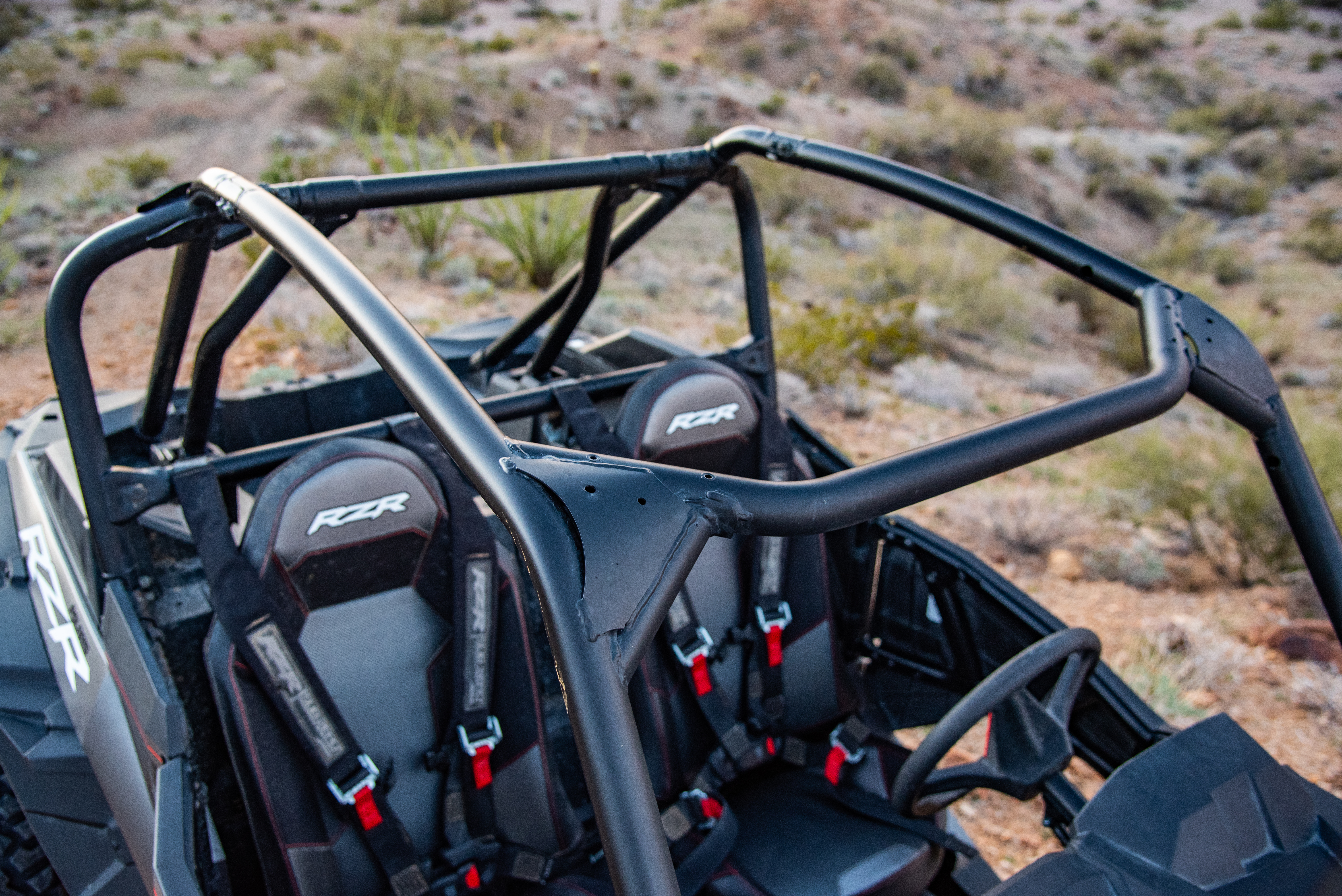Polaris RZR XP Turbo S Velocity Review
Does The Turbo S Velocity Edition Deliver The Same Capability And Thrills?!
Story & Photos: Casey Cordeiro
The Polaris RZR XP Turbo S Velocity edition presents a great value proposition when we compare it to the regular XP Turbo S, but does it still create the same thrills that the more expensive Turbo S consistently delivers? The Velocity might not have the fancy shocks and the Ride Command digital system, but it does have the basics that make the Turbo S a solid off-road machine. They call it “the beast”, but we like to call it “Rock Mamba”. Let’s see why this is so…
Polaris RZR XP Turbo S Velocity Review Highlights:
- 72” width from the factory
- 32” ITP Coyote tires
- Upgraded chassis that is built to handle the higher speeds and bigger obstacles that this machine can tackle
- Large 3.0 Walker Evans Velocity Series shocks with clicker compression adjustment
- 4-point harnesses from the factory
- Upgraded ROPS system for additional passenger protection
- 168 horsepower churning out of the turbocharged, twin-cylinder engine
- The Velocity edition does not include the electronic shocks, Ride Command system, roof, lower quarter doors, or accent LED lighting like the standard RZR XP Turbo S model.
ENGINE:
If you have driven or seen a Turbo-equipped RZR XP machine in the past couple of years, then you’ll know how this 168 horsepower twin cylinder rips across the trails. It is downright fast, and Polaris has tuned it to deliver power very consistently and smooth from the bottom of the RPM range all the way to the top. Every time we drive a RZR Turbo, the smooth power delivery, even when you smash the throttle, is very appreciated. It just surges with minimal lag, if any at all, with a satisfying blow-off valve whistle when you let off of hard throttle inputs. That is addicting!
Yes, the Turbo S Velocity likes to scream down the trails – that is really what it is good at. However, when I have taken this machine to the rocks and slower trails, I’m consistently surprised with how smooth the power delivery is when crawling at 3-4 mph. You’d never know there is a turbo attached when you’re just cruising around; it’s just waiting to be unleashed. There is a reason that this exact machine won the toughest one-day rock race on the planet last year, also known as King of the Hammers. It is smooth and consistent, which are two things that are needed to get through the rocks quickly.
One last thing about the engine is that we tested it up to 12,500 feet in elevation this year. It really performs flawlessly, even up in these high elevations. There is a bit of power loss, but not near as much as you would have in an N/A engine. Needless to say, the engine is definitely a highlight of this Turbo S, and the deep, burly sound coming out of the exhaust just adds to the thrill.
TRANSMISSION/DRIVETRAIN:
Polaris has really fine tuned their transmission, clutching, and overall drivetrain setup over the years, and all of their latest innovations are present in the Velocity. It is no secret that they have had issues with small differentials not being reliable, carrier bearings wearing out (front driveshaft) after just a few thousand miles (or less…), and some axles not being the strongest in brutal terrain. I am pleased to report that many of these issues have been resolved; let’s go through them…
One of the biggest drivetrain upgrades that we find on the Turbo S Velocity edition is the massive front differential. This isolated unit is probably one of the best differentials on the market at this point, mainly for its heft, but also because the automatic locking feature engages right when you want it to. No lag here! When you’re rock crawling or going over challenging terrain, this instant engagement is a massive plus. I’m pretty sure it would be extremely difficult to break this differential, too. It’s a very strong unit.
Polaris has upgraded other components, like the carrier bearing, along with the axles. The latter of those are significantly strengthened to be able to handle the increase length of the 72” wide vehicle. If you jack this machine up and unload the suspension, you can see just how much droop travel (and CV angle) the Velocity has from the factory, so it’s great to see that these driveline components have been strengthened to handle the twisting forces. After almost a 1000 miles in this vehicle and so many different terrains, I haven’t had any issues with the axles breaking or CVs being inconsistent with their fitment into the differentials. Polaris has done their job making sure that these parts are top notch for this vehicle.
SUSPENSION:
Suspension is one of the biggest changes that the Velocity has compared to the regular XP Turbo S. Like I mentioned earlier, the Velocity has non-electronically-controlled Walker Evans Velocity shocks on all four corners. Some might say that this is a bad thing, but I actually think that this Walker Evans setup allows you to build this car into the ultimate play vehicle – you can make the Velocity edition “your own” way easier than you can the standard Turbo S. Do you like changing the spring rates and, potentially, changing the internal valving on your suspension system? Then these Walker Evans shocks are for you. These Velocity series shocks are the real deal, too – Polaris did not skimp on the cost with these. If you wanted to go buy a set of Walker’s Velocity shocks, these would be the ones you would buy. The fact that they come on a factory vehicle with no compromises is awesome!
Now, yes, the suspension components are all high end and offer a great value for this vehicle. Even the a-arms and trailing arms have been significantly upgraded on the new Velocity. However, I still can’t figure out why Polaris runs the stock spring rates that they do. Don’t get me wrong, if you want to go fast, then this vehicle does a great job at that. 45+ mph will give you a smooth-ish ride over the little chop, but you’ll still get a big bucking effect in the big whoops. If you don’t want to go fast all the time, then the Velocity gives you a very harsh ride. It’s kind of either all-or-nothing with the stock suspension setup – you either go fast or you get beat up going slow, pick your poison. To try and alleviate some of the harshness, and get a lot more droop travel freed up, I removed the front swaybar (super easy process). This resulted in an improved ride, but I still wouldn’t consider the ride to be “smooth”. This also aided the vehicle’s rock crawling ability dramatically by increasing traction in many areas. If you want to smooth out the ride further and keep the stock spring setup (an aftermarket true dual-rate spring setup would do this machine wonders in the ride department!!), then adding a set of Walker Links to the rear swaybar would be a great start.
TIRES/WHEELS/BRAKES:
The brakes on the Turbo S models (Velocity or regular edition) were all upgraded and have great stopping power, along with a progressive pedal feel that is consistently great. The discs are vented and the twin piston calipers on all four corners work very well in all conditions. If you want to go fast, you need to be able to stop fast, too. And, this Turbo S is an excellent stopper.
Part of the reason this Velocity stops well is because it has the excellent 32” ITP Coyote tires on all 4 corners. These provided great forward bite and turning traction in the hard and soft dirt, although they are a bit skatey at times. The Coyotes seem to clear out pretty well in mud, too. The only terrain that they simply aren’t good for is the sand. A set of sand tires on this Turbo S Velocity are SO much fun with the 72” width and excellent stability that the Turbo S chassis has in stock form. In the dirt, the Coyote tires are truly a great all-around tire, and they provide long lasting durability. Again, in almost 1000 miles of hard driving and testing miles, I have the normal expected wear showing on these with no big chunks out of the tires.
One thing – why, Polaris, don’t you include beadlock wheels on your high performance UTVs? I realize this is an added cost, but these wheels have many added benefits. Hopefully they will include beadlock wheels as an option, or as standard equipment, in the future.
INTERIOR & EXTERIOR:
The Velocity’s interior is functional and much improved over past generations of RZRs. If you want multiple storage compartments, the Velocity delivers with 4 different storage compartments for the driver and passenger. Compared to the regular Turbo S, the Velocity edition is a bit bare bones, but the functionality is there. Again, if you’re going to build a race vehicle out of a Turbo S, then the Velocity edition is a fantastic platform to start with because it doesn’t have all of the electronics and add-ons that the regular Turbo S has from the factory. The Velocity still includes the digital and analog driver’s instrument cluster mounted in the line of site, and we really like this gauge cluster over past models. It is right where you want it while driving, and Polaris did a great job integrating it into the dash.
The seats and seat belts are pretty standard RZR items. The fact that this Velocity has 4-point harnesses from the factory is awesome! Well done, Polaris. This will keep many people safe… The part that they missed on are the stock seats, which lack a good bottom cushion, don’t have a usable seat sliding system once it gets full of mud or sand, and aren’t mounted well to the vehicle. They also lack good support, both lateral and on the bottom, for fast paced riding. Polaris, please upgrade the Turbo S seats to include the seat sliders and mounts out of your new PRO models.
With that being said, I still really like the sightlines out of the front of a RZR. They aren’t quite as good as a Yamaha YXZ1000R, which is really a benchmark for a great view out of the front of a UTV, but the Velocity is very close in terms of what you can see right in front of you. It also helps with rock crawling when you don’t have lower quarter doors, but I’d still like to have those full half doors from the regular Turbo S. In the Velocity, the driver and passenger regularly get rocks shot at them through the openings below the quarter doors.
The exterior is very reminiscent of other RZR models. The Velocity lacks the LED accent lights of the regular Turbo S, but I like the bare bones look of this Velocity edition. Polaris has consistently upgraded their attachments for the exterior plastics to be made better, and this Turbo S has the best fitment yet.
FINAL THOUGHTS:
If you’re looking to build the ultimate race RZR, or one of the best rock crawling UTVs on the planet, the RZR XP Turbo S Velocity edition is very hard to beat. It’s why we named this article “Rock Mamba” in the first place – the Velocity really excels in this environment. It’s why it won King of the Hammers last year, and it will probably be used in the race by many competitors again this year. In the handling department, it is very fun to drive, especially if you like steering with the throttle – this chassis plays well with throttle inputs. If you buy a Turbo S Velocity, you can greatly improve the comfort and handling by putting a set of aftermarket seats in it, a set of lower quarter doors, and a true dual-rate spring setup on all 4 corners. Those small but effective changes will bring this machine to life.
With a retail price of $22,499 MSRP, the Polaris RZR XP Turbo S Velocity edition represents a great value for what you get. Check it out at your local Polaris dealer.

